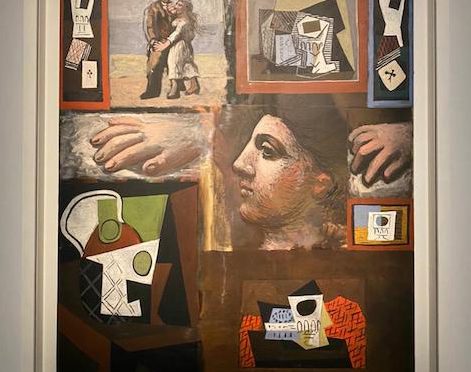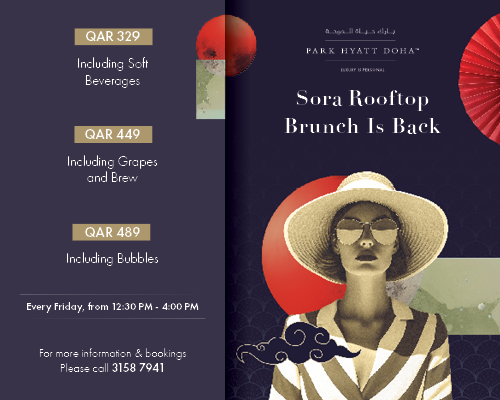Qatar Museums reopened the Fire Station: Artist in Residence this week with the unveiling of the special exhibition Picasso’s Studios in the Garage Gallery.
The exhibition features 108 extraordinary artworks by Pablo Picasso selected from the unparalleled collection of the Musée National Picasso in Paris. The exhibition includes paintings, sculptures, drawings, prints and ceramics. On view through 1 November 2020, the innovative exhibition traces the evolution of Picasso’s epoch-making art by presenting it in eight distinct galleries, representing the series of studios where he worked throughout his career.
Qatar Museums Director of Exhibitions Sheikha Reem Al Thani said they are absolutely delighted to finally be able to share with the public the exceptional exhibition, organised in collaboration with the Musée National Picasso in Paris.
Picasso’s Studios is a celebration of a great artist’s career and gives a view into his art practice. All the works at one time belonged to the artist’s personal collection, and all are grouped within the exhibition to recall the places in which they were created. It is especially appropriate that we are presenting Picasso’s Studios at the Fire Station: Artist in Residence, where outstanding contemporary Qatari artists produce and show their work in Doha today.
Spanning eight decades, from Picasso’s arrival in Paris in 1900 to his final years on the Mediterranean in the 1970s, the exhibition is part of the 2020 Qatar-France Year of Culture, a Qatar Museums initiative dedicated to building bridges between people and institutions of the two nations.
Qatar Museums Head of Years of Culture Aisha Ghanem Al Attiya said they are pleased to bring the outstanding exhibition to Qatar as part of the Year of Culture programme, and introduce the collection of one of France’s most iconic museums to Qatar audiences.
Picasso’s Studios is curated by Virginie Perdrisot-Cassan, Curator of Paintings (1921-1973), Sculptures and Ceramics at the Musée National Picasso-Paris.
Organised chronologically, the exhibition focuses on the eight studios where the artist worked:
Le Bateau-Lavoir, Picasso’s bohemian workspace in the Butte Montmartre, Paris, a former piano studio converted into workshops (May 1904 – September 1909; 1912), represented in the exhibition by Sacré-Coeur (Winter 1909–1910, oil on canvas) and other works.
Studio at rue Schoelcher, a bourgeois apartment in the Montparnasse district in the south of Paris (September 1913-1916), where Picasso created works such as the exhibition highlight Man at the Fireplace (1916, oil on canvas).
Studio at rue La Boétie at Paris’s 23 rue de la Boétie (November 1918-1940, 1951), represented in the exhibition by the painting Studies (1920) and the charcoal drawing The Artist in Front of His Canvas (22 March 1938).
The Castle at Boisgeloup in Normandy, a 17th century mansion that the artist purchased to establish a workshop large enough for sculpture (June 1930 – autumn 1936), where Picasso created the works Woman’s Head in Profile – Marie-Thérèse (1931, bronze) and Still Life: Bust, Fruit Dish and Palette (3 March 1932, oil on canvas).
The Studio at rue des Grands-Augustins (1937 – spring 1967) in Paris, where Picasso painted Guernica (1937) – which remains on permanent view at the Museo Reina Sofia in Madrid – as well as the Doha exhibition highlight The Kitchen (November 1948, oil on canvas).
The Fournas Studio in Vallauris, Côte d’Azur in the south of France (1948-1955), where the artist created more than 4,000 pieces of ceramic ware.
The much-photographed Studio of ‘La Californie’ Picasso’s home, studio and gallery in Cannes, Côte d’Azur (1955 – 1961), where he created The Studio of La Californie (30 March 1956, oil on canvas) and The Bay at Cannes (19 April 1958–9 June1958, oil on canvas).
Picasso’s retreat at the Vauvenargues Castle to the Mas de Notre Dame de Vie in Provence (1958-1973), built in front of Mont Ste Victoire, famously painted by Paul Cézanne, where Picasso created the exhibition highlight Woman’s Head (late 1962, painted sheet metal).
Qatar Museums Reopening
Qatar Museums has reopened a number of its museums and heritage sites this week (1 July). The reopening aligns with the Ministry’s second phase of the general resumption of public activity in Qatar, based on milestones reached in controlling the Covid-19 pandemic. Qatar Museums plans to reopen the remainder of its museums in phases, while rolling out the new health and safety protocols, in accordance with global standards.
Fire Station Artist in Residence Hours, Tickets and Visitor Guidelines
The Garage Gallery at the Fire Station: Artist in Residence is now open from Sunday through Thursday, 9 am to 3 pm. In keeping with the guidelines set by the Ministry of Public Health, a limited number of visitors and staff will be allowed in the Garage Gallery space at a time. Visitors will be required to reserve tickets in advance. Click HERE to book your tickets.
Upon arrival visitors will be required present a ‘green’ health status on the Ehteraz virus-tracing app. Masks are required for all visitors (12 years of age and older). Each person will go through a normal temperature reading at the entrance. Visitors without mask and with temperatures that are not normal, will not be allowed.
Hand sanitiser stations will be placed throughout the gallery to encourage visitors to keep their hands clean. Signage reminding visitors to keep a safe distance from other visitors will also be visible on site. Cloak rooms will be unavailable during this period. Interactive features such as touchscreens will be temporarily removed, and gallery guides will be offered online only.










